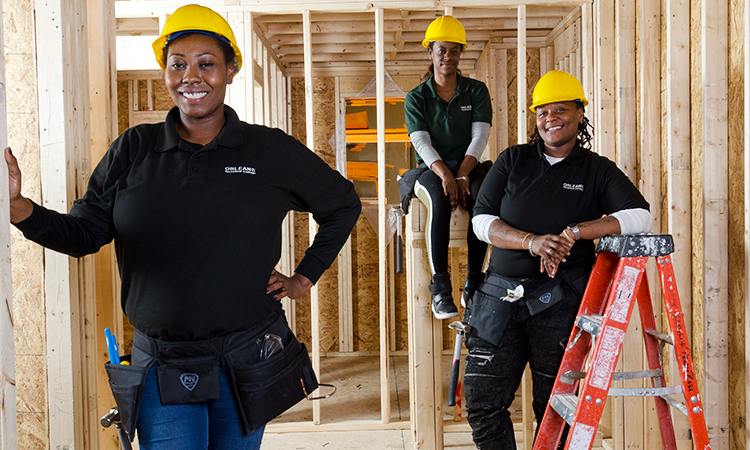0.1: Social Justice is Valuing Work!
- Page ID
- 18092
\( \newcommand{\vecs}[1]{\overset { \scriptstyle \rightharpoonup} {\mathbf{#1}} } \)
\( \newcommand{\vecd}[1]{\overset{-\!-\!\rightharpoonup}{\vphantom{a}\smash {#1}}} \)
\( \newcommand{\id}{\mathrm{id}}\) \( \newcommand{\Span}{\mathrm{span}}\)
( \newcommand{\kernel}{\mathrm{null}\,}\) \( \newcommand{\range}{\mathrm{range}\,}\)
\( \newcommand{\RealPart}{\mathrm{Re}}\) \( \newcommand{\ImaginaryPart}{\mathrm{Im}}\)
\( \newcommand{\Argument}{\mathrm{Arg}}\) \( \newcommand{\norm}[1]{\| #1 \|}\)
\( \newcommand{\inner}[2]{\langle #1, #2 \rangle}\)
\( \newcommand{\Span}{\mathrm{span}}\)
\( \newcommand{\id}{\mathrm{id}}\)
\( \newcommand{\Span}{\mathrm{span}}\)
\( \newcommand{\kernel}{\mathrm{null}\,}\)
\( \newcommand{\range}{\mathrm{range}\,}\)
\( \newcommand{\RealPart}{\mathrm{Re}}\)
\( \newcommand{\ImaginaryPart}{\mathrm{Im}}\)
\( \newcommand{\Argument}{\mathrm{Arg}}\)
\( \newcommand{\norm}[1]{\| #1 \|}\)
\( \newcommand{\inner}[2]{\langle #1, #2 \rangle}\)
\( \newcommand{\Span}{\mathrm{span}}\) \( \newcommand{\AA}{\unicode[.8,0]{x212B}}\)
\( \newcommand{\vectorA}[1]{\vec{#1}} % arrow\)
\( \newcommand{\vectorAt}[1]{\vec{\text{#1}}} % arrow\)
\( \newcommand{\vectorB}[1]{\overset { \scriptstyle \rightharpoonup} {\mathbf{#1}} } \)
\( \newcommand{\vectorC}[1]{\textbf{#1}} \)
\( \newcommand{\vectorD}[1]{\overrightarrow{#1}} \)
\( \newcommand{\vectorDt}[1]{\overrightarrow{\text{#1}}} \)
\( \newcommand{\vectE}[1]{\overset{-\!-\!\rightharpoonup}{\vphantom{a}\smash{\mathbf {#1}}}} \)
\( \newcommand{\vecs}[1]{\overset { \scriptstyle \rightharpoonup} {\mathbf{#1}} } \)
\( \newcommand{\vecd}[1]{\overset{-\!-\!\rightharpoonup}{\vphantom{a}\smash {#1}}} \)
\(\newcommand{\avec}{\mathbf a}\) \(\newcommand{\bvec}{\mathbf b}\) \(\newcommand{\cvec}{\mathbf c}\) \(\newcommand{\dvec}{\mathbf d}\) \(\newcommand{\dtil}{\widetilde{\mathbf d}}\) \(\newcommand{\evec}{\mathbf e}\) \(\newcommand{\fvec}{\mathbf f}\) \(\newcommand{\nvec}{\mathbf n}\) \(\newcommand{\pvec}{\mathbf p}\) \(\newcommand{\qvec}{\mathbf q}\) \(\newcommand{\svec}{\mathbf s}\) \(\newcommand{\tvec}{\mathbf t}\) \(\newcommand{\uvec}{\mathbf u}\) \(\newcommand{\vvec}{\mathbf v}\) \(\newcommand{\wvec}{\mathbf w}\) \(\newcommand{\xvec}{\mathbf x}\) \(\newcommand{\yvec}{\mathbf y}\) \(\newcommand{\zvec}{\mathbf z}\) \(\newcommand{\rvec}{\mathbf r}\) \(\newcommand{\mvec}{\mathbf m}\) \(\newcommand{\zerovec}{\mathbf 0}\) \(\newcommand{\onevec}{\mathbf 1}\) \(\newcommand{\real}{\mathbb R}\) \(\newcommand{\twovec}[2]{\left[\begin{array}{r}#1 \\ #2 \end{array}\right]}\) \(\newcommand{\ctwovec}[2]{\left[\begin{array}{c}#1 \\ #2 \end{array}\right]}\) \(\newcommand{\threevec}[3]{\left[\begin{array}{r}#1 \\ #2 \\ #3 \end{array}\right]}\) \(\newcommand{\cthreevec}[3]{\left[\begin{array}{c}#1 \\ #2 \\ #3 \end{array}\right]}\) \(\newcommand{\fourvec}[4]{\left[\begin{array}{r}#1 \\ #2 \\ #3 \\ #4 \end{array}\right]}\) \(\newcommand{\cfourvec}[4]{\left[\begin{array}{c}#1 \\ #2 \\ #3 \\ #4 \end{array}\right]}\) \(\newcommand{\fivevec}[5]{\left[\begin{array}{r}#1 \\ #2 \\ #3 \\ #4 \\ #5 \\ \end{array}\right]}\) \(\newcommand{\cfivevec}[5]{\left[\begin{array}{c}#1 \\ #2 \\ #3 \\ #4 \\ #5 \\ \end{array}\right]}\) \(\newcommand{\mattwo}[4]{\left[\begin{array}{rr}#1 \amp #2 \\ #3 \amp #4 \\ \end{array}\right]}\) \(\newcommand{\laspan}[1]{\text{Span}\{#1\}}\) \(\newcommand{\bcal}{\cal B}\) \(\newcommand{\ccal}{\cal C}\) \(\newcommand{\scal}{\cal S}\) \(\newcommand{\wcal}{\cal W}\) \(\newcommand{\ecal}{\cal E}\) \(\newcommand{\coords}[2]{\left\{#1\right\}_{#2}}\) \(\newcommand{\gray}[1]{\color{gray}{#1}}\) \(\newcommand{\lgray}[1]{\color{lightgray}{#1}}\) \(\newcommand{\rank}{\operatorname{rank}}\) \(\newcommand{\row}{\text{Row}}\) \(\newcommand{\col}{\text{Col}}\) \(\renewcommand{\row}{\text{Row}}\) \(\newcommand{\nul}{\text{Nul}}\) \(\newcommand{\var}{\text{Var}}\) \(\newcommand{\corr}{\text{corr}}\) \(\newcommand{\len}[1]{\left|#1\right|}\) \(\newcommand{\bbar}{\overline{\bvec}}\) \(\newcommand{\bhat}{\widehat{\bvec}}\) \(\newcommand{\bperp}{\bvec^\perp}\) \(\newcommand{\xhat}{\widehat{\xvec}}\) \(\newcommand{\vhat}{\widehat{\vvec}}\) \(\newcommand{\uhat}{\widehat{\uvec}}\) \(\newcommand{\what}{\widehat{\wvec}}\) \(\newcommand{\Sighat}{\widehat{\Sigma}}\) \(\newcommand{\lt}{<}\) \(\newcommand{\gt}{>}\) \(\newcommand{\amp}{&}\) \(\definecolor{fillinmathshade}{gray}{0.9}\)Social Justice
There are numerous definitions or descriptions of the term ‘social justice’ most centering on remedying inequities in the human experience. The definition presented in this discussion on the history of work in the US is a broader characterization intended to weave a narrative from events, conditions, and norms in our society that will ultimately associate it with worker safety.
An article in Investopedia describes social justice as referring to “... a fair and equitable division of resources, opportunities, and privileges in society. Originally a religious concept, it has come to be conceptualized more loosely as the just organization of social institutions that deliver access to economic benefits. It is sometimes referred to as "distributive justice". 1, 2.
An open forum viewpoint on the meaning of social justice describes it as " a political and philosophical theory which asserts that there are dimensions to the concept of justice beyond those embodied in the principles of civil or criminal law, economic supply and demand, or traditional moral frameworks. Social justice tends to focus more on just relations between groups within society as opposed to the justice of individual conduct or justice for individuals." While somewhat disparate, the two perspectives suggest social justice focuses on just relationships and what is best for all.
The US has not always had the best reputation for protecting workers from harm, valuing all work and even valuing all lives. During darker chapters in our history including our very origins work was exploitative and many workers were devalued. Prison camp forced labor and slavery are primary examples of worker exploitation that has existed in the US and throughout human civilization. Exploited workers have always been workers doing the necessary and mundane, grueling, exhaustive, and dangerous work in society. Ask yourselves, who wants to be the worker cleaning up or attending to human waste? Who wants to be the worker lugging ½ ton stone or picking cotton, even strawberries in 100F heat, or slaughtering livestock for consumption? Many work tasks are not glamorous and many of us would probably choose other means to provide for ourselves and families.
Worker exploitation has often resulted in workers being exposed to hazards and dangerous working conditions that would lead to illness, injury, and death. When workers were plentiful and expendable this was considered acceptable for any number of reasons. Worker exploitation has also been about not receiving fair wages, fair treatment, safe working conditions, reasonable work schedules, health care and workers compensation. In many ways one could argue worker concerns have always been social concerns. Social in fact is defined as relating to human society, the welfare of humans as members of society. Productive work is social and integral to society.
A Division of Workers
The subject of forced labor or slave labor is only mentioned to shape the narrative of human civilizations relationship to work. Later in the discussion we will circle back to the legacy of slave labor in US work history. In fact it is not only in less modern times that work has been assigned a social hierarchy. This means that in more modern times, children of a certain age are not expected or required to be part of the labor force until they become adults and seniors typically do not have to work unto death unless they choose to do so or are forced out of the labor market for reasons associated with health and mental acuity. In more modern times the safety of youth and older workers is valued more than a perceived benefit of their contribution to the workforce.
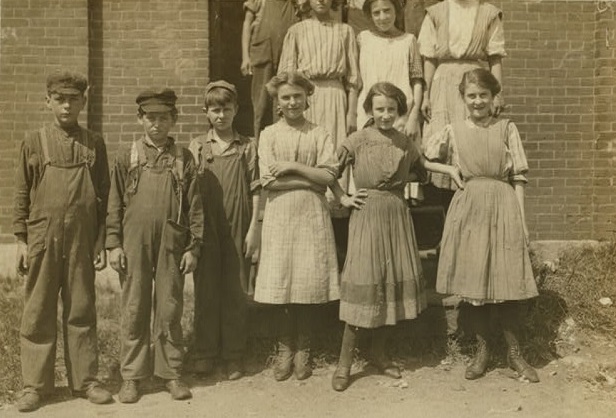
.jpg?revision=1&size=bestfit&width=279&height=418)
The U.S. Department of Labor is the sole federal agency that monitors child labor and enforces child labor laws. The most sweeping federal law that restricts the employment and abuse of children workers is the Fair Labor Standards Act (FLSA). Child labor provisions under FLSA are designed to protect the educational opportunities of youth and prohibit their employment in jobs that are detrimental to their health and safety. FLSA restricts the hours that youth younger than 16 years of age can work and lists hazardous occupations too dangerous for young workers to perform. Enforcement of the FLSA's child labor provisions is handled by the Department's Wage and Hour Division.(DOL-Child Labor)
Prior to protections, from the period of the civil war through the 1930s children were an integral part of the US workforce. Many working in factories or family farms helped to fuel the US economy before and at the turn of the 20th Century. Young workers are still an integral part of the US workforce but with the protections introduced in the FLSA. California has a sizeable segment of teen workers in retail and food industries with resources available to help them understand the value they bring to the workforce.(youngworkers.org)
Older workers gained some special protections with the creation of the Social Security Administration when the Social Security Act of 1935 was signed into law. The Act established a system of Federal old-age benefits, and enabled States to make more adequate provision for aged persons, blind persons, dependent and crippled children, maternal and child welfare, public health, and the administration of unemployment benefits. Social Security allows workers of a certain age to continue working beyond retirement or to retire, ceasing work of any kind. One of the most enduring social safety nets, social security attempts to value both the longevity of work and the worker.
A Consequence of the Industrial Revolution
Industrialization in the US brought about many challenges to the concept of work. Humans have always used tools to assist with work productivity but industrialization had an exponential effect on efficiency and output. Machines rapidly took the place of manual labor increasing production even as human control and interface was still necessary. Machines reduced the brawn necessary for some types of work but also increased the necessity and opportunity of work for women and children in factories that were often dirty, dangerous, requiring long hours of grueling effort.
Workers were a commodity and their productive work fueled economic growth, population growth and sustained prosperity and wealth for the barons of industrialization. Yet, for a period of time the poor and working class were exploited and not cared for, did not truly see the results of their labors until losses of property and lives got the attention of the US populace and representatives of the Federal Government.
The Monongah Mine Disaster and Triangle Shirtwaist Factory Fire, both workplace catastrophes, occurred within five years of each other. The mine disaster was the worst in US history. Occurring on Dec 6 1907 in Monongah, W. Va., an explosion attributed to a spark that ignited methane gas killed more than 350 men and boys, killing some instantly and trapping many who ultimately died from toxic gas poisoning. Public outcry led to the creation of the Bureau of Mines in 1910 by the Federal Government in response to this event and other similar catastrophes happening in the US and globally. Industrialization was actually fueled by the various coal mining operations needed to sustain the economic growth engine of energy and power production.
The Triangle Shirtwaist Factory Fire occurred on March 25, 1911, in Manhattan, NY. 146 mostly women and young girls, were trapped when a fire broke out on the 10th floor of the building, many jumping to their deaths or burned alive because exit doors were locked from the outside. This was done to keep workers from taking too many breaks, to keep out potential union organizers, and to possibly cut down on employee theft. Many of the women and men who died in this tragedy and the mining incident were immigrants of Italian and Jewish ancestry. Prejudice and bigotry added to class and caste distinctions which devalued worker contributions during a period of great change and knowledge attainment.
The Triangle Shirtwaist Factory Fire like the Monongah Mine Disaster resulted in the development of safety standards and government oversight. There was no criminal negligence attributed in either disaster although there was some civil liability in the Factory fire. Although these disasters fomented public outcry, which initiated many workplace safety initiatives, it did little to make work valued, equitable, and esteemed for all who labor for a living.
Civil Rights
When one thinks of civil rights, the plight of the descendants of slaves, African or Black Americans, racial discrimination in all areas of the human experience is what is most impressed on your mind. Lack of access because of race to most paths to wealth, health, education, and prosperity was an additional hardship for this group of poor and working class Americans. Awareness of these challenges become heightened during the civil rights movements beginning in the 1940s and continuing through the -70s. This amplified the importance of valuing all work and workers.
The struggles of ethnic and racial minorities in the US have always been about inclusion, being treated fairly with dignity and respect, and being valued. Civil rights leaders such as Martin Luther King Jr, Cesar Chavez, Delores Huerta, and Yuri Kochiyama during their best moments promoted a better America and centered human rights, civil rights, and worker rights around the common denominator of the dignity of work, valuing all people and the part that plays in a united and prosperous America.
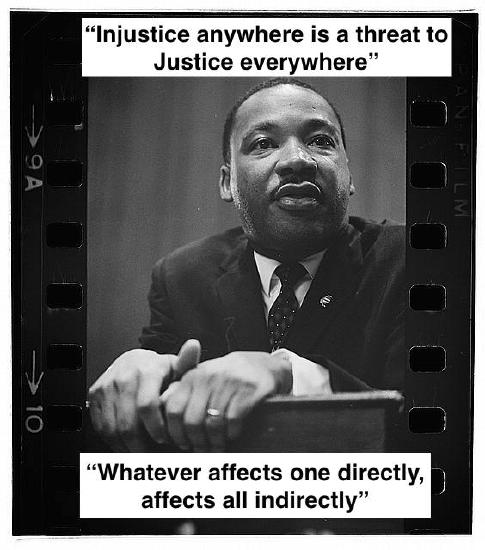
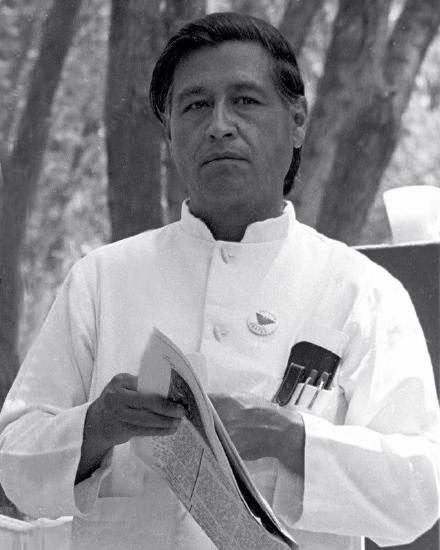
MLK Jr. was in Memphis, Tennessee, after delivering his “I’ve been to the Mountaintop” speech in support of Black sanitation workers' right to unionize when he was assassinated. These workers were chronically underpaid and had such poor working conditions that two men in the month preceding King’s visit were crushed to death in a garbage compacting truck. Even our sanitation workers have the right to work in a safe, sanitary, and healthy work environment and we know that because of his efforts circumstances are much improved today. MLKs work in his last days is a shining reminder of work and worker dignity being a core component of social justice.
Cesar Chavez was an advocate for the fair and safe treatment of agricultural and migrant workers. He and Delores Huerta pushed for the successful creation of farming labor unions that resulted in better wages, safer working and living conditions for migrant workers and their families. Their advocacy called for work stoppages or strikes that, while met with resistance, ultimately got the attention of consumers. Elevating the plight of workers who ensure an adequate supply of food is a fundamental social justice concern. When all work is valued, work is safe, and communities thrive.
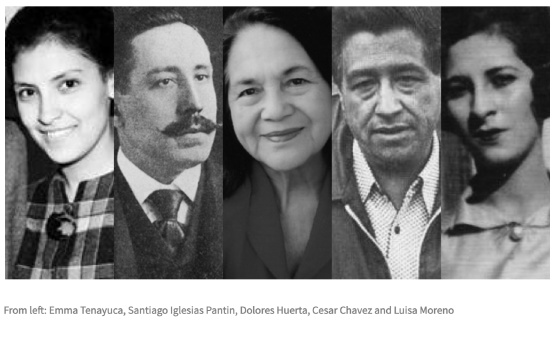
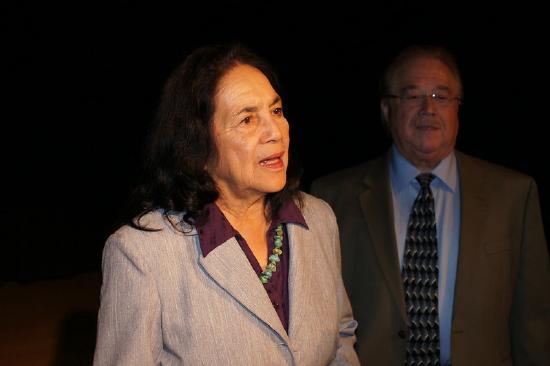
Yuri Kochiyama who spent several years of her adult life in US Japanese Internment camps began her civil rights activist career at a social justice protest surrounding the unfair treatment of minority workers advocating for decent jobs, decent work. She was an advocate for the fair treatment of all people spending a good portion of her life advocating for reparations for Japanese Americans interned during WWII. So why is she relevant to the history of work in the US? Prison labor is a part of the US workforce even today. There is a reckoning and recognition that must be addressed. All work and workers must be valued even those society has punished. A view of the history of work and in general the work performed by a confined US labor force requires thoughtful reflection by all. It is not enough or effective to just learn about workplace safety without some discussion of work in general and a mention of all workers in society.
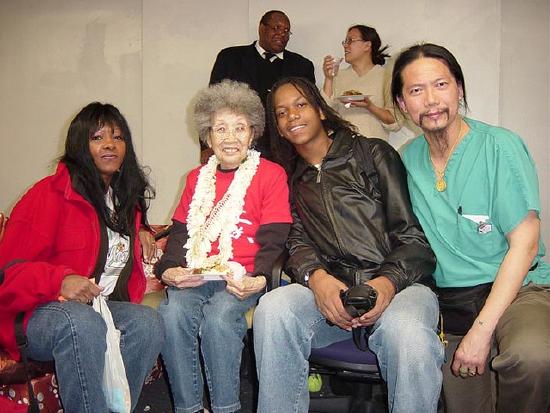
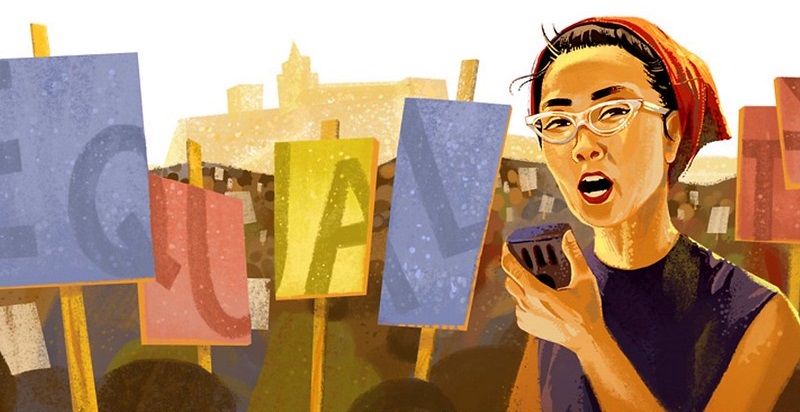
Women in the Workforce
Women and girls typically are more than half the worlds’ population and this is equally true for their representation in the US. However women have not held court, prominence or preeminence where work is concerned. Women have often had the added challenges of caring for children and home and have gotten heightened attention when filling in during labor shortages typically caused by wars and other conflicts. But work and workplaces historically have not always been hospitable to women. Unfair practices in the payment of wages, career advancement, and other social norms that impede a woman’s progress are a unique set of social constructs in play with women at work. Progress has been slow but things are changing.
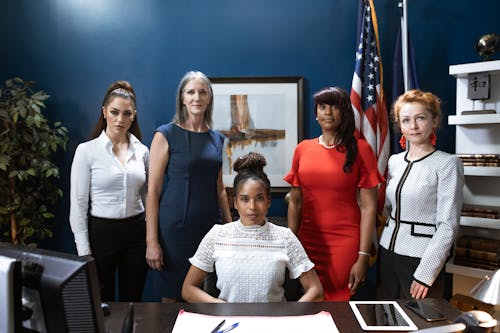
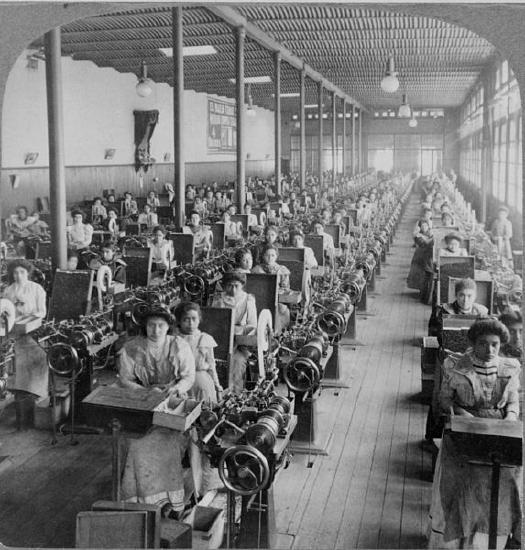
Although women achieved the right to vote in 1920 some achievements in equity in the workplace did not come until decades later. The Women’s empowerment revolution, some of which coincided with the civil rights movement during the 60 and 70s brought the issue of gender disparities in work front and center to the history of work in the US. Gender bias was built into our institutions and even our nation’s founding documents and addressing this bias required what may have been viewed as extreme measures given the times. Women asserting their right to dress how they wished, look how they wished, work where they wished, was not always met with acceptance. As a result, women’s empowerment was hijacked and sexualized for a time, taking and sidelining an important social justice vision for equity and inclusion, gender parity in all spaces but primarily in the workplace. (see Equal Rights Amendment)
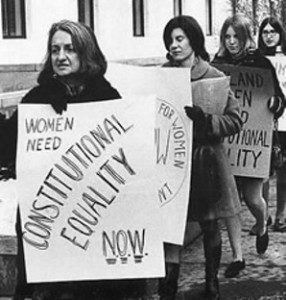
The “Me Too” movement which precipitated an avalanche of social media self-identification with and discussion on, sexual harassment at work brought gender politics back to the forefront and a new generation of workers of all genders have pushed to finally make the issue of sexual harassment in workspaces a relic of the past. We must recognize characterizing hostile work environments present a metamorphosis in how we view work and relationships at work and understand women are not the only affected workers benefiting from a new understanding. Specifically, how we view and treat young workers, aging workers, immigrant workers, minority workers, and LGBQT workers in workplaces is filtered through what is considered a hostile work environment. Unwelcome attention, harassment, coercion, and bullying of any kind should no longer be tolerated. Abusive language and intimidating behaviors are kept in check by continuing education and training. Yes, education and training, a very important and critical component of our review of the history of work in the US, is the backbone of worker safety. We will pick up some of its relevance in the next section.
